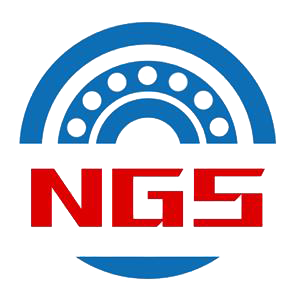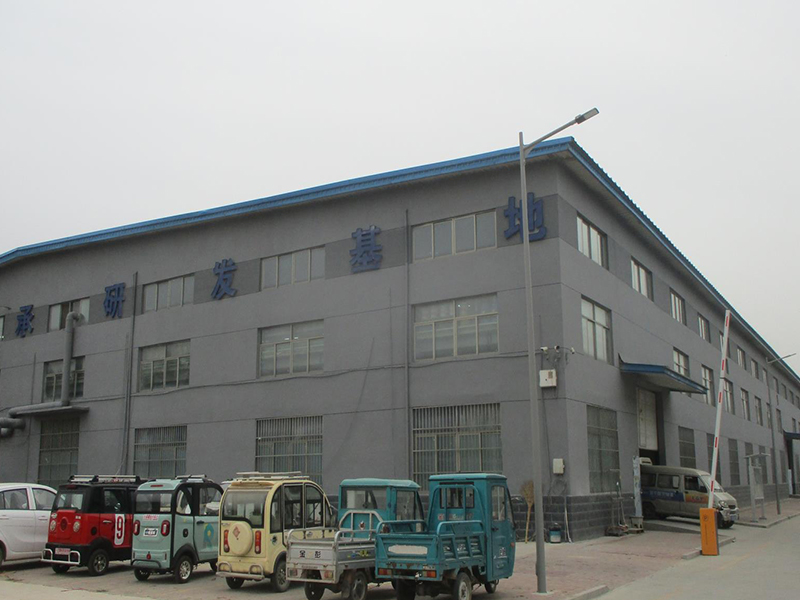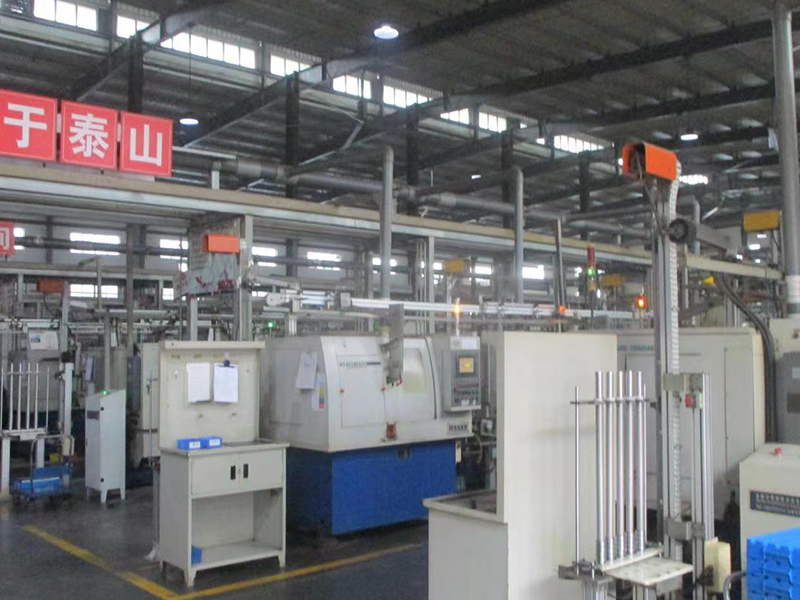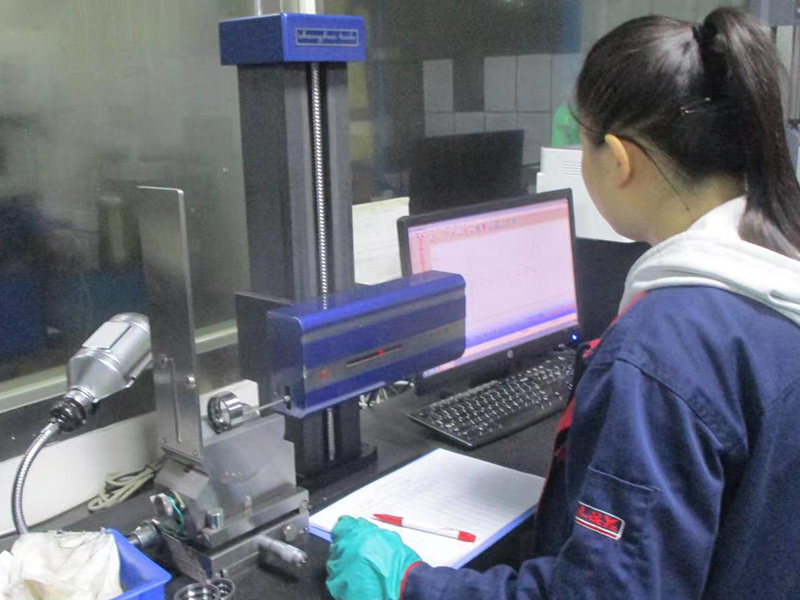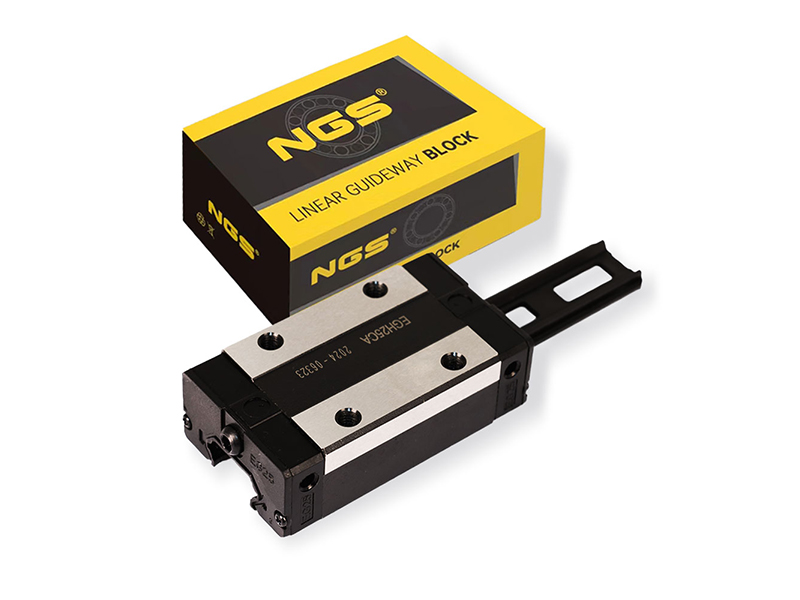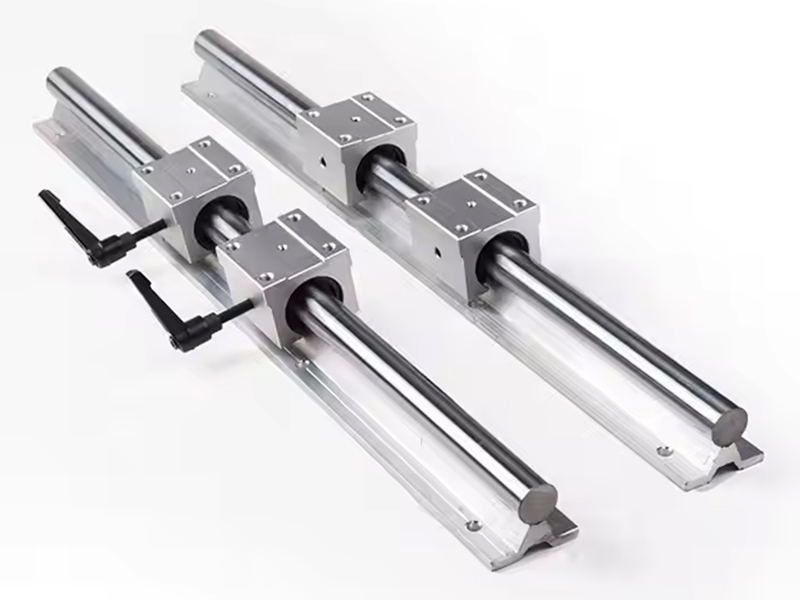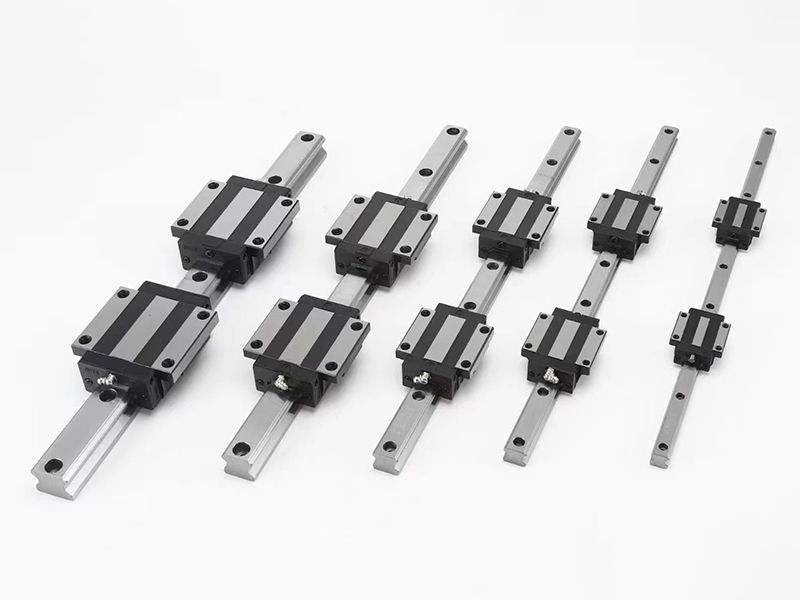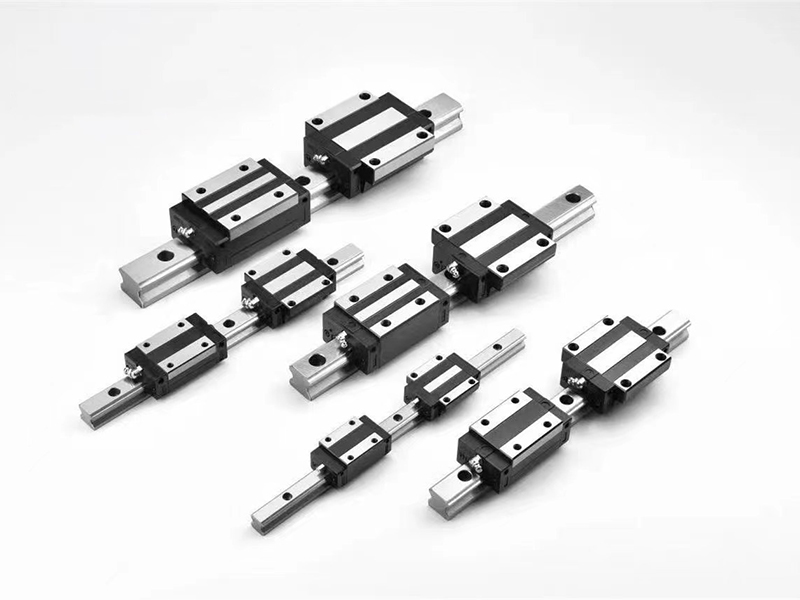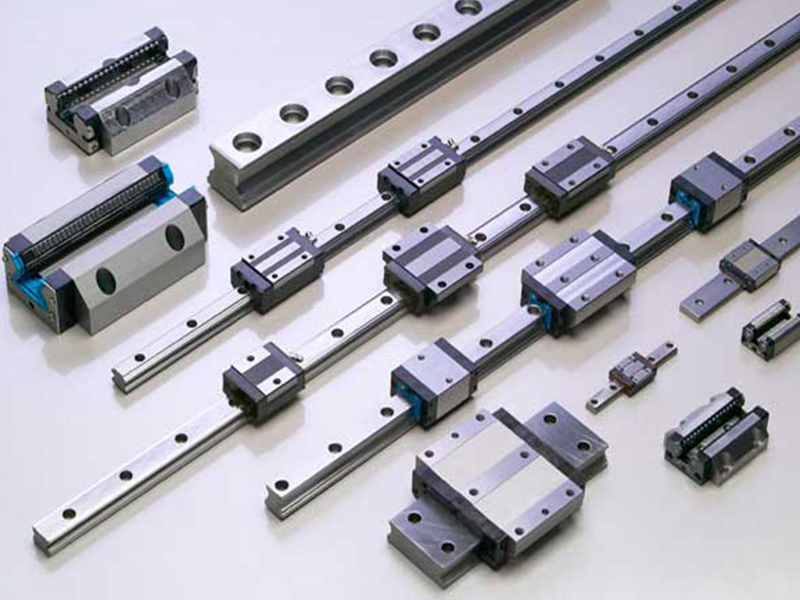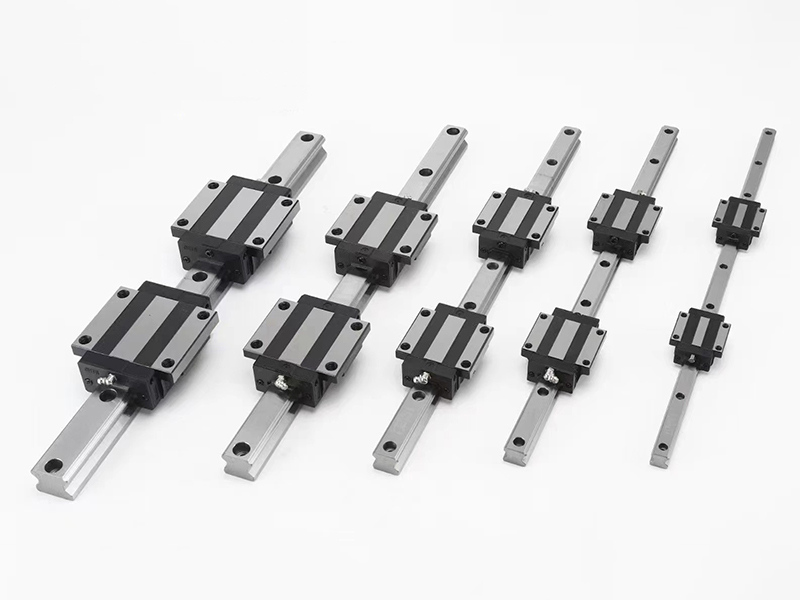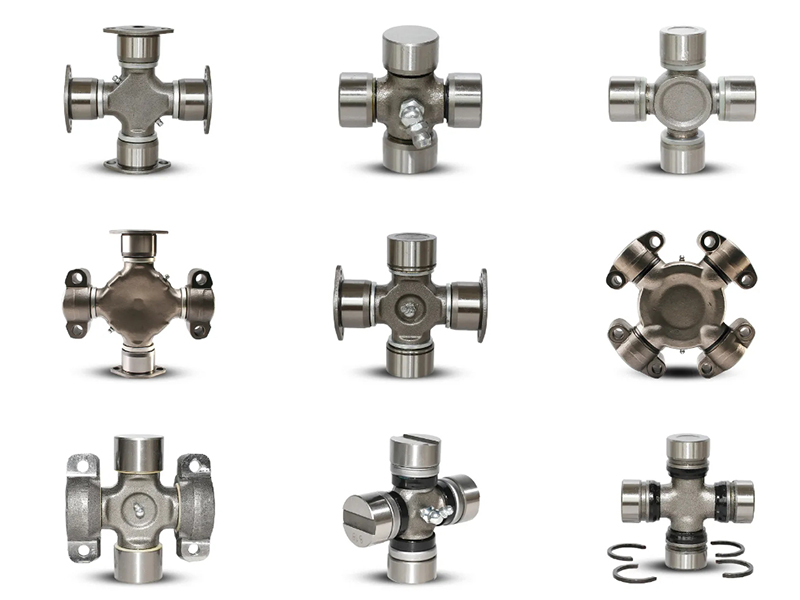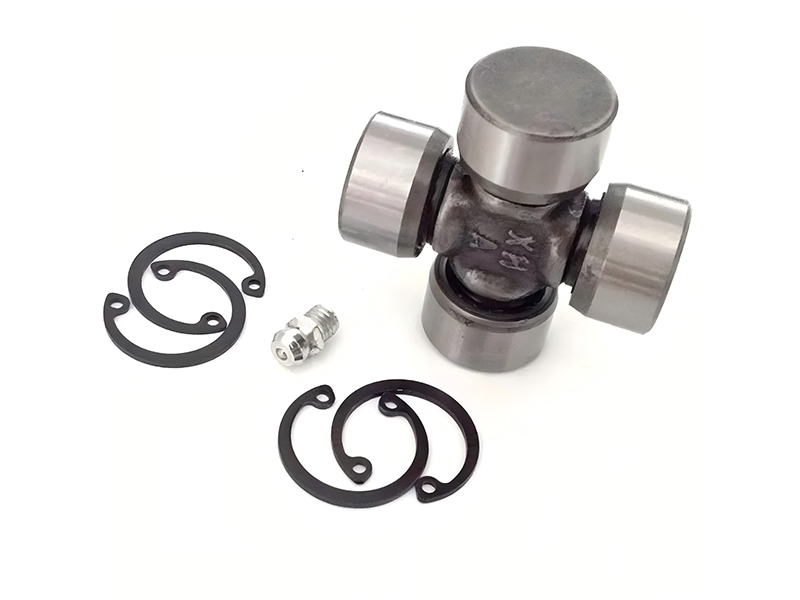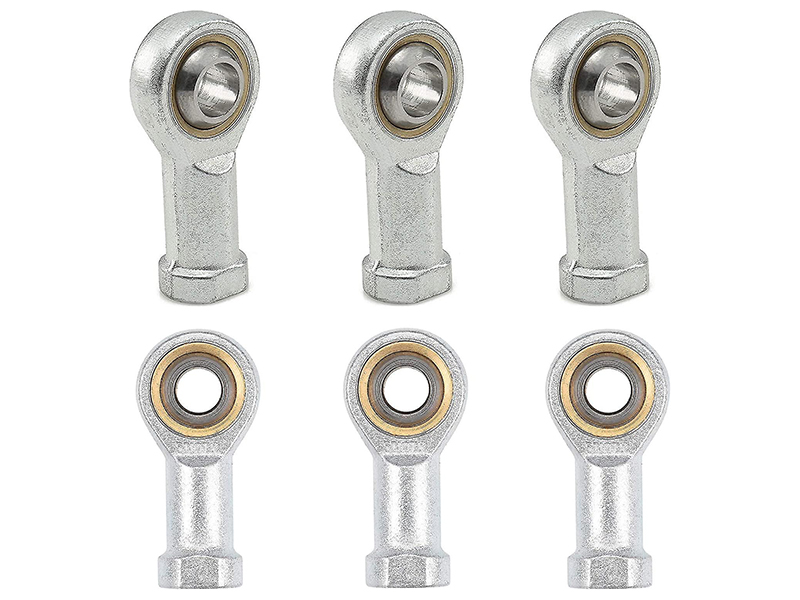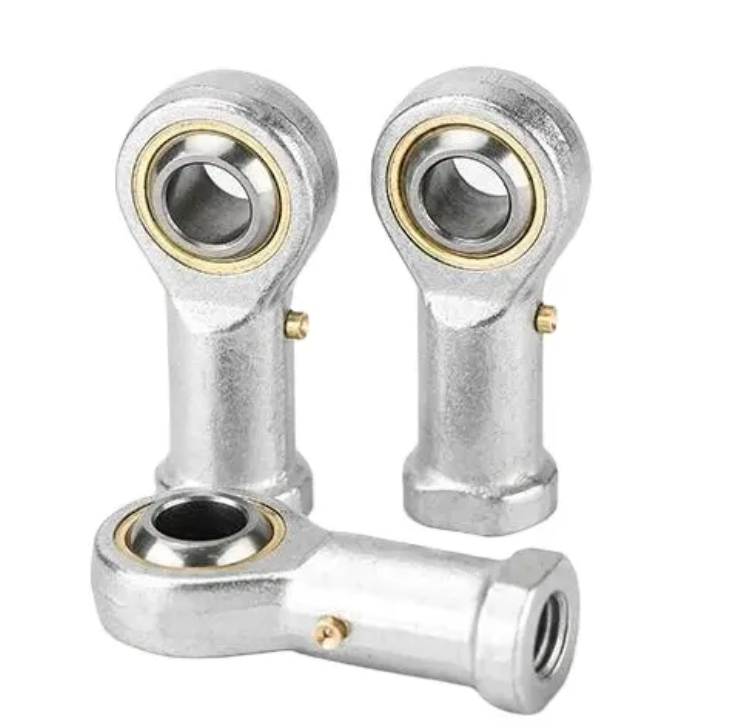In the vast world of mechanical engineering, when there is a need to connect two components that must withstand significant forces while also allowing for angular articulation to compensate for misalignment, a critical component comes into play: the Radial Spherical Plain Bearing. It is not merely a simple connector; it is the "flexible joint" that ensures the smooth and reliable operation of complex mechanical systems. From the heavy-duty crane booms of mega-ships to the suspension of Formula 1 cars, from excavators in construction sites to precision aircraft, radial spherical plain bearings are ubiquitous.
1. Core Definition and Historical Origins
1.1 Definition
A Radial Spherical Plain Bearing, internationally standardized under this term, is a type of plain bearing. Its core characteristics are:
Load Direction: Primarily designed to withstand radial loads, i.e., loads acting perpendicular to the bearing's axis. Simultaneously, due to its special structure, it can also withstand a certain degree of axial loads (along the axis direction) and combination loads.
Core Function: Possesses self-aligning capability, allowing it to compensate for static and dynamic misalignment caused by installation errors, shaft deflection, and vibration.
The term "radial" specifies its primary load direction, while "spherical plain" describes its ability to provide multi-directional freedom of movement through a sliding spherical interface.
1.2 History and Development
The concept of the spherical plain bearing dates back to the late 1930s and early 1940s. Its invention is generally credited to two engineers working almost simultaneously yet independently: American George Heim and British Herbert Rose.
Heim Joint: In the United States, bearings produced by the Heim Company were named after their inventor as the "Heim Joint," a term still widely used in North America, especially in racing and custom fabrication circles.
Rose Joint: In the UK, those produced by the Rose company became known as the "Rose Joint," a term more prevalent in Europe and Commonwealth countries.
Early spherical plain bearings were primarily metal-on-metal designs requiring frequent lubrication. With advancements in materials science, particularly the advent of high-performance engineering plastics like PTFE, self-lubricating spherical plain bearings saw rapid development from the 1960s onwards, vastly expanding their application range.
2. Structure and Working Principle: The Ingenious Spherical Design
2.1 Basic Structure
A typical radial spherical plain bearing consists of three fundamental components:
Outer Ring: Usually made of high-carbon chromium bearing steel. Its inner surface is a concave sphere. The outer ring typically features one or more slots (loading grooves) to facilitate the assembly and adjustment of the inner ring.
Inner Ring: Also manufactured from high-strength steel. Its outer surface is a convex sphere, meticulously matched to the outer ring's concave sphere.
Sliding Contact Pair: This is the "heart" of the bearing—the contact interface between the spherical surfaces of the inner and outer rings. Depending on the type, this interface can be:
Direct metal-to-metal contact (with lubrication).
Metal in contact with a layer of high-performance engineering plastic/composite material (self-lubricating).
2.2 Working Principle
The operation of a radial spherical plain bearing is based on spherical sliding friction.
Articulating Motion: Due to the spherical fit between the inner and outer rings, the inner ring can freely swivel within a conical range relative to the outer ring. This swivel angle (the misalignment compensation angle) is a key parameter of the bearing, typically ranging from ±3° to ±10°, with special designs allowing for even greater angles. This feature perfectly solves the "misalignment" problem, preventing additional stresses that would occur in a rigid connection.
Rotational Motion: The inner ring can also rotate around its axis within the outer ring, but this is a sliding rotation, not the smooth rolling motion of an anti-friction bearing.
Simple Analogy: It functions much like the ball-and-socket joint of a human hip or shoulder. The spherical femoral head (inner ring) can move in multiple directions within the acetabulum (outer ring), all while supporting the body's weight (radial load).
3. Classification and Types: Catering to Myriad Applications
Radial spherical plain bearings can be classified in various ways, most commonly by the material of the sliding contact surfaces and their structural design.
3.1 Classification by Sliding Contact Surface Material (The Most Important Classification)
A. Metal-on-Metal Type (Maintenance-Type)
Structure: Both inner and outer rings are made of bearing steel (e.g., GCr15). The sliding surfaces are often treated with phosphating, oxidation, or plating to improve initial run-in characteristics and prevent galling.
Advantages:
Extremely High Load Capacity: The large surface contact area allows for very high static and dynamic loads.
Excellent Impact Resistance: Robust construction withstands heavy shock loads.
High-Temperature Resistance: Can operate in elevated temperature environments (depending on the lubricant).
Disadvantages:
High Coefficient of Friction: Requires continuous or intermittent lubrication.
Sensitivity to Contamination: Ingress of dust or abrasive particles accelerates wear.
High Maintenance Cost: Requires regular maintenance of the lubrication system.
Applications: Construction machinery (excavators, cranes), mining equipment, heavy-duty trucks—extreme, heavy-load, low-speed, harsh environments.
B. Self-Lubricating Type (Metal-on-Composite)
Structure: This is the mainstream type in modern industry. The spherical surface of the inner ring is lined with a sintered or glued composite layer. This composite layer typically consists of three parts:
Steel Backing: Provides a strong bond with the inner ring body.
Porous Bronze Layer: Acts as an intermediate layer, enhancing heat conductivity and serving as a reservoir for the plastic layer.
Polymer Layer: The core component, usually PTFE (Polytetrafluoroethylene) or modified POM (Polyoxymethylene), providing an extremely low coefficient of friction.
Advantages:
Maintenance-Free, Self-Lubricating: The PTFE/POM layer provides excellent dry-running performance, eliminating the need for external lubrication.
Corrosion Resistance: The composite layer resists many chemicals.
Clean Operation: No grease leakage, suitable for food, pharmaceutical, and textile industries.
Low and Controllable Friction/Wear: Low starting and running friction torque. Wear is primarily confined to the soft composite layer, protecting the more expensive metal components.
Disadvantages:
Load capacity and temperature resistance are generally lower than similarly sized metal-on-metal types.
The plastic layer may soften or degrade under continuous high temperatures.
Applications: Widely used in applications demanding high performance, lightweight, and maintenance-free operation, such as racing car suspension linkages, aircraft control systems, precision instruments, hydraulic cylinders, and robotic joints.
3.2 Classification by Structural Form
Non-Separable Type: The outer ring is a single piece, without a slot. Simpler structure, better rigidity, higher load capacity.
Separable Type: The outer ring has an axial slot, allowing the inner ring to be easily removed, facilitating installation and maintenance in confined spaces.
With Shank (Rod End): The inner or outer ring is extended into a threaded shank, enabling direct connection to linkages.
Slotted Type (Pin Type): The outer ring has a slit, allowing for radial clearance adjustment by compressing the ring.
3.3 Classification by Clearance
Standard Clearance (C0): For general applications.
Increased Clearance (C1, C2, etc.): For high-temperature applications or where press-fits are used, to prevent seizure due to thermal expansion.
4. Key Performance Parameters and Selection Guide
4.1 Key Performance Parameters
Dynamic Load Rating: The load that the bearing can endure for 1 million oscillations (or a defined number of revolutions) under rotating or oscillating conditions, achieving its basic rating life.
Static Load Rating: The maximum load the bearing can withstand in a stationary or very slow-moving state without undergoing permanent deformation.
Maximum Articulation Angle: The maximum angle through which the inner and outer rings can swivel relative to each other.
Coefficient of Friction: A critical metric for self-lubricating bearings, directly impacting motion sensitivity and temperature rise.
Operating Temperature Range: Determined by the seals and sliding material.
Radial Clearance: The internal clearance between the inner and outer rings, affecting motion precision and load distribution.
4.2 Selection Guide
Selecting the appropriate radial spherical plain bearing is a systematic process that must consider the following factors:
Load Type and Magnitude: Is the load primarily radial, axial, or a combination? Calculate the maximum static and dynamic loads.
Motion Type: Is it continuous rotation, oscillation, or occasional adjustment? Determine the oscillation frequency and angle.
Misalignment Requirements: What is the estimated misalignment angle?
Speed: The relative sliding speed of the surfaces.
Operating Environment: Presence of dust, moisture, chemicals? Temperature range?
Maintenance Conditions: Is lubrication accessible? If not, a self-lubricating type is mandatory.
Space and Installation: Is space constrained? Is a separable or rod end structure required?
Simplified Selection Flowchart:
Analyze Operating Conditions → Determine Type (Self-Lubricating / Maintenance) → Preliminary Sizing → Verify Load, Life, Angle → Finalize Clearance & Precision → Confirm Installation Method → Final Selection.
5. Core Application Areas: From Heavy Industry to Cutting-Edge Technology
5.1 Transportation
Motorsports: The ultimate expression of spherical plain bearing performance. In F1, rally, and other racing cars, they are used in all critical linkage points: suspension pushrods, pull rods, rockers, and tie-rods. Their low friction, high responsiveness, lightweight, and maintenance-free nature directly impact the car's handling precision and limit performance.
Commercial Vehicles: Suspension systems and steering linkages in heavy-duty trucks.
Aerospace: Control linkages for aircraft flight control surfaces, landing gear systems, and door mechanisms, where extreme reliability and lightweight are paramount.
5.2 Industrial & Mobile Machinery
All linkage pin joints on the boom, arm, and bucket of hydraulic excavators.
Luffing and extension mechanisms in mobile cranes.
Boom systems in concrete pump trucks.
5.3 Industrial Equipment
Hydraulics & Pneumatics: Clevis mounts for hydraulic cylinders, compensating for misalignment between the cylinder and its mount.
Robotics: Joints and linkages in industrial robots, requiring high precision, low friction, and long life.
Textile & Printing Machinery: Requiring clean, maintenance-free oscillating support points.
6. Installation, Maintenance, and Failure Analysis
6.1 Installation Considerations
Alignment: Even within the allowable angle, initial alignment should be as precise as possible to maximize service life.
Press-Fitting: If an interference fit is used, the press force must be applied directly to the ring with the interference fit, never through the sliding surface or ball.
Clearance Check: After installation, check for smooth rotation and any binding.
Lubrication: For maintenance-type bearings, fill with the specified grease before installation.
6.2 Maintenance
Maintenance-Type: Establish a regular lubrication schedule using specified high-performance, extreme-pressure lithium complex or molybdenum disulfide grease. Monitor the condition of purged old grease for signs of contamination.
Self-Lubricating Type: Essentially maintenance-free. However, periodic inspection for wear and checking operational clearance is recommended.
6.3 Common Failure Modes and Causes
Normal Wear: Gradual, even consumption of the sliding surface material—the expected end-of-life mode.
Abrasive Wear: Caused by contaminants (dust, sand) entering the sliding interface, resulting in scored surfaces.
Adhesive Wear (Galling): In metal-on-metal types under poor lubrication or overload, surface metal cold-welds and tears.
Fatigue Spalling: Under cyclic heavy loading, micro-cracks initiate on or beneath the sliding surface and propagate, causing material to flake off.
Corrosion: Rusting of metal parts in humid or corrosive environments.
Plastic Deformation: Static load exceeds the static load rating, causing permanent indentation (brinelling) of the spherical surface.
7. Future Trends
The technology of spherical plain bearings continues to evolve. Future trends focus on:
Advanced Materials: Developing new composite materials with higher PV (Pressure-Velocity) values, lower coefficients of friction, greater temperature resistance (e.g., beyond 300°C), and longer service life.
Smart Bearings: Integrating sensors to monitor bearing load, temperature, and wear state in real-time, enabling predictive maintenance.
Lightweighting: Further weight reduction through structural optimization (e.g., topology optimization) and the use of lightweight alloys (e.g., titanium) and composite outer rings, particularly in aerospace and motorsports.
Green Engineering: Developing bearings using biodegradable lubricants and designs with a smaller environmental footprint throughout their entire lifecycle.
8. Conclusion
The radial spherical plain bearing, a seemingly simple mechanical component, is a crystallization of engineering ingenuity. Through its clever spherical design, it perfectly balances the conflicting demands of "load-bearing" and "articulation." From indestructible heavy machinery to the ultimate speed machines, it reliably and flexibly supports the operation of modern industry. Understanding its principles and mastering its selection and application is a valuable and essential skill for any mechanical designer or maintenance engineer. As technology advances, this "universal joint" will undoubtedly play an even more critical role in an ever-widening array of fields.
